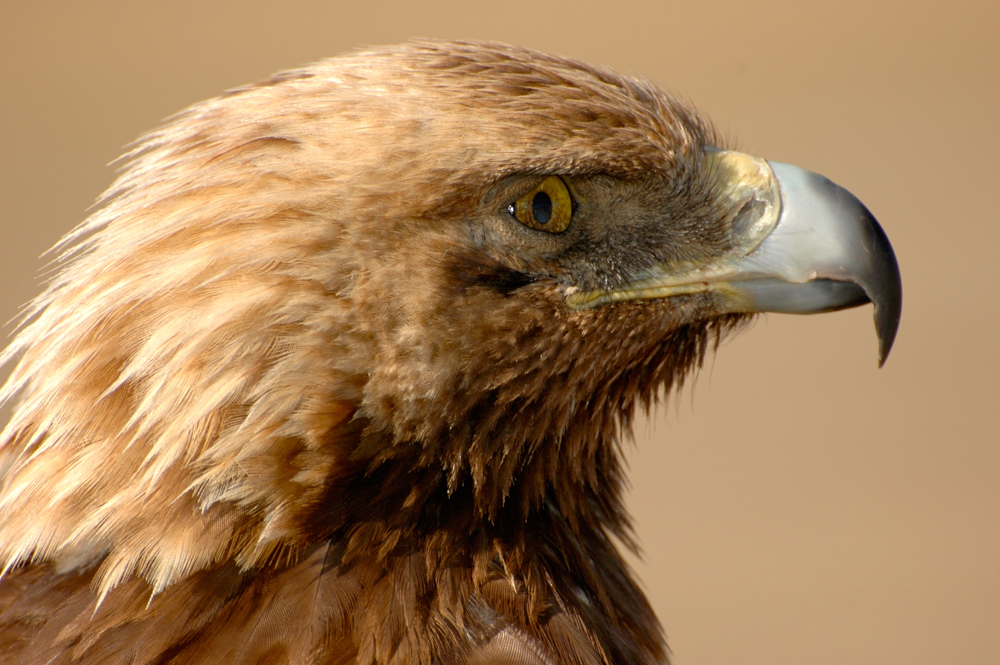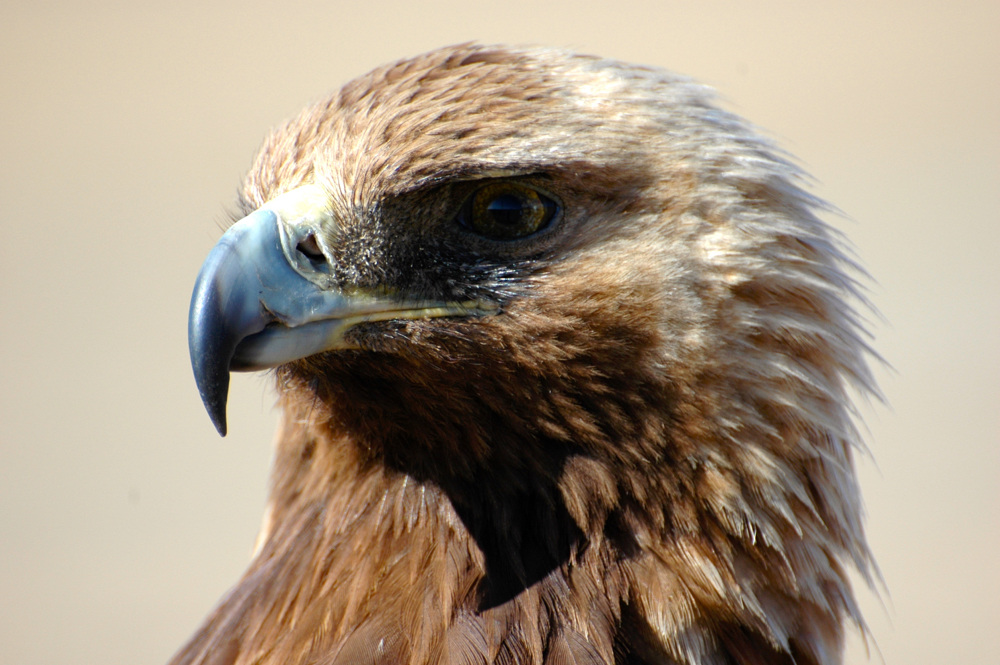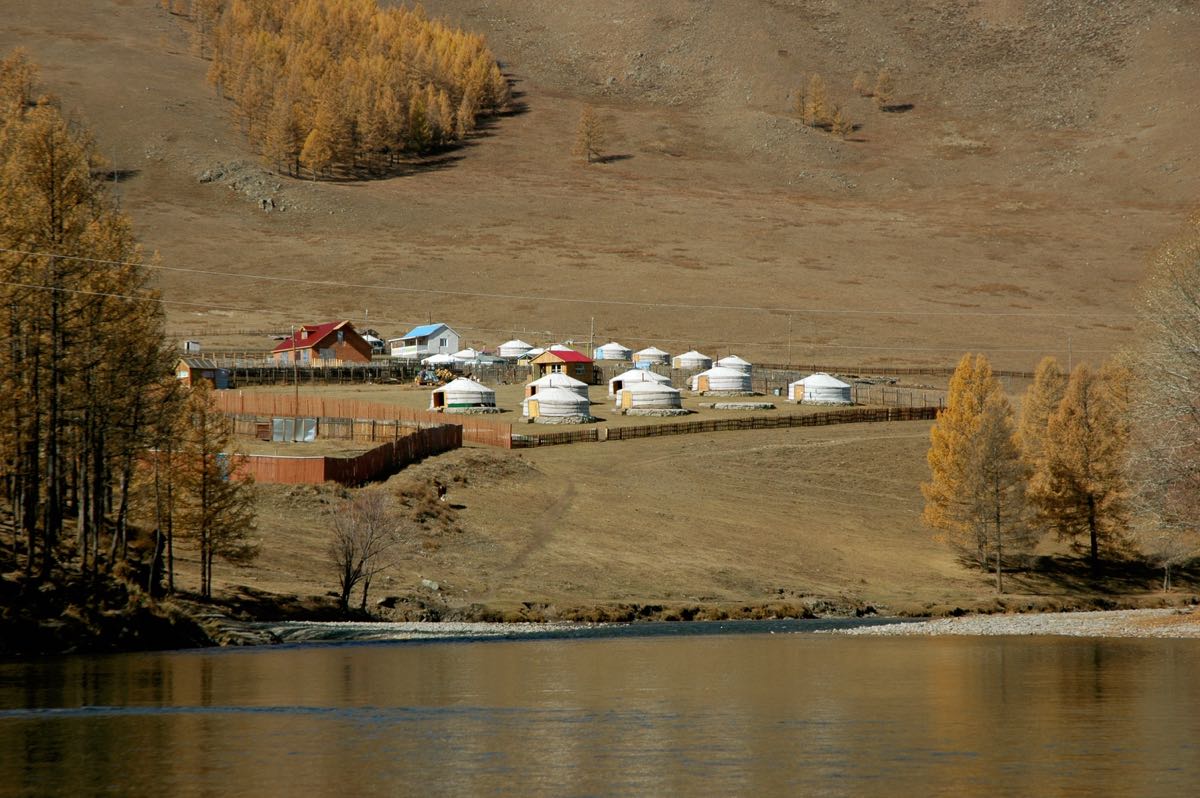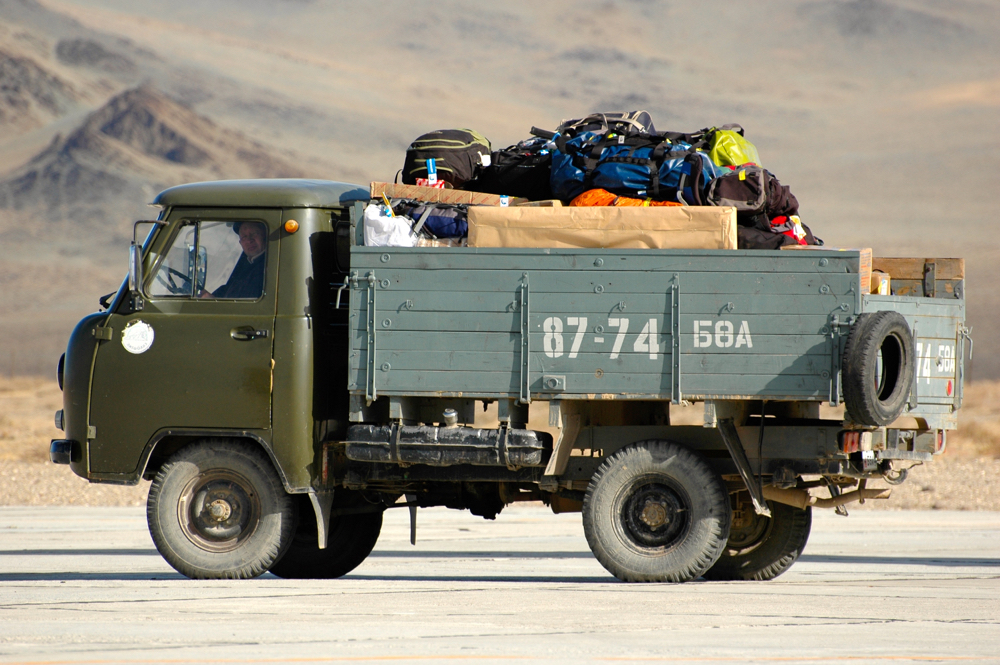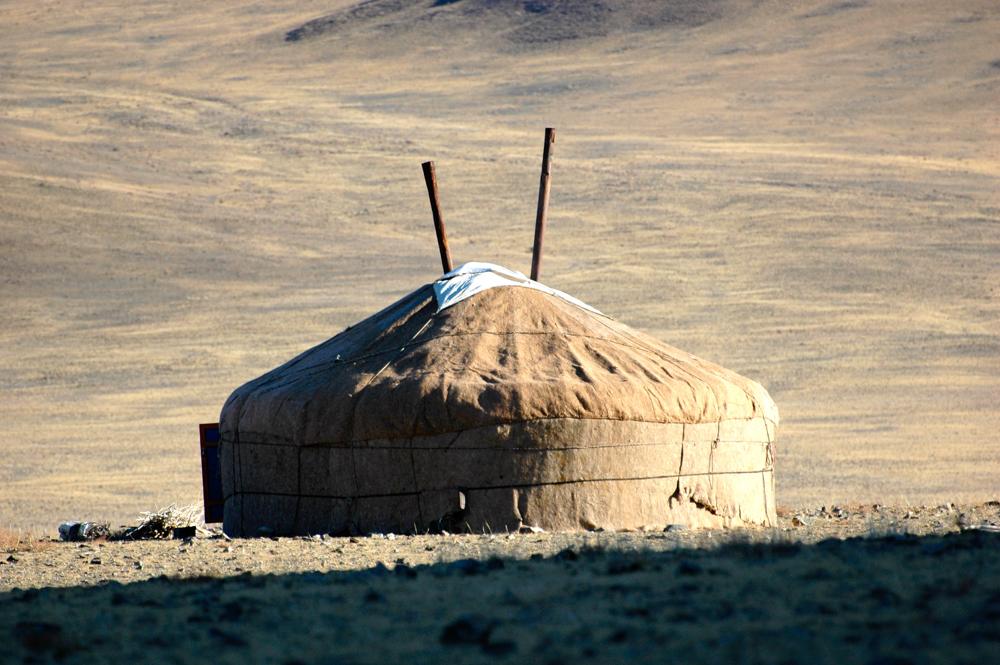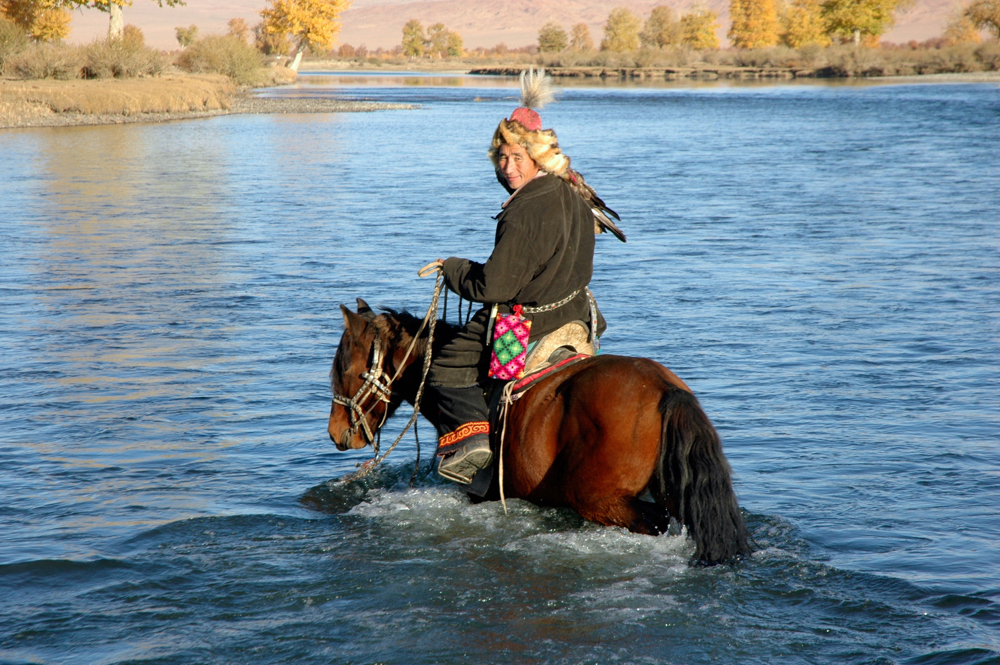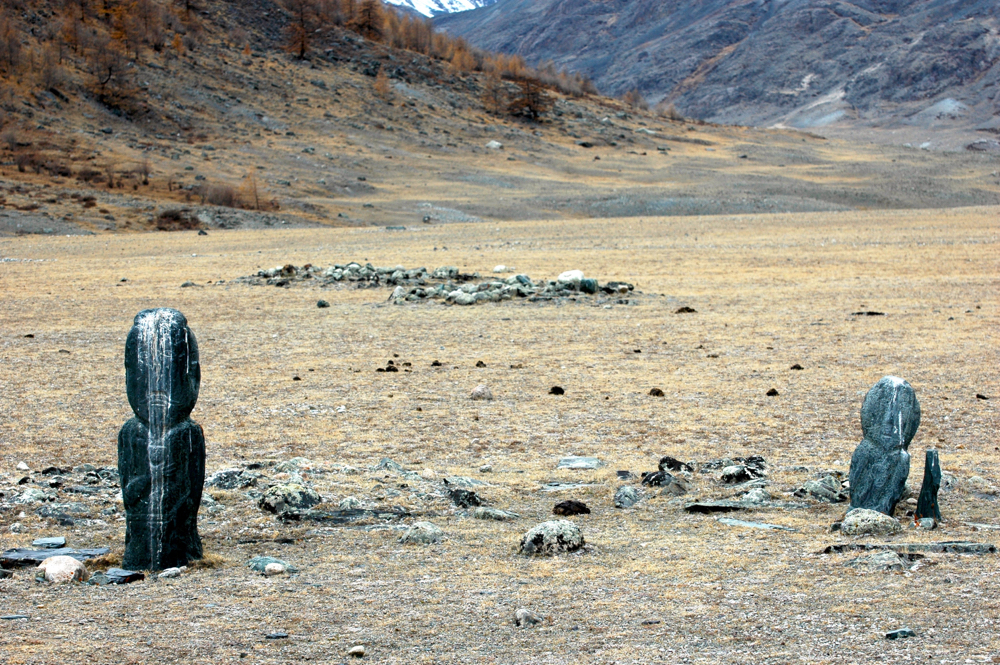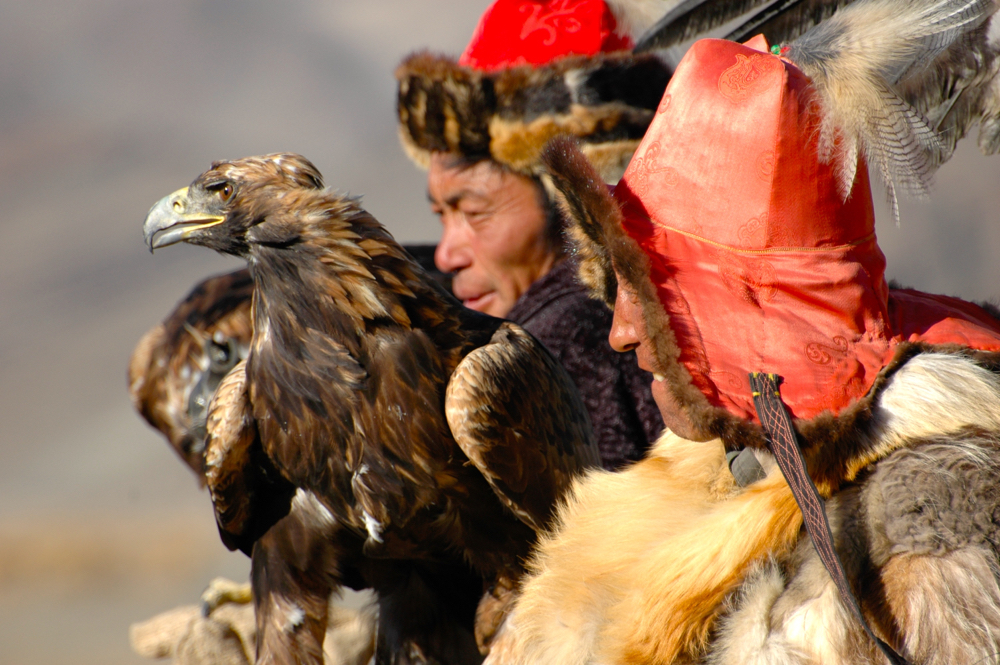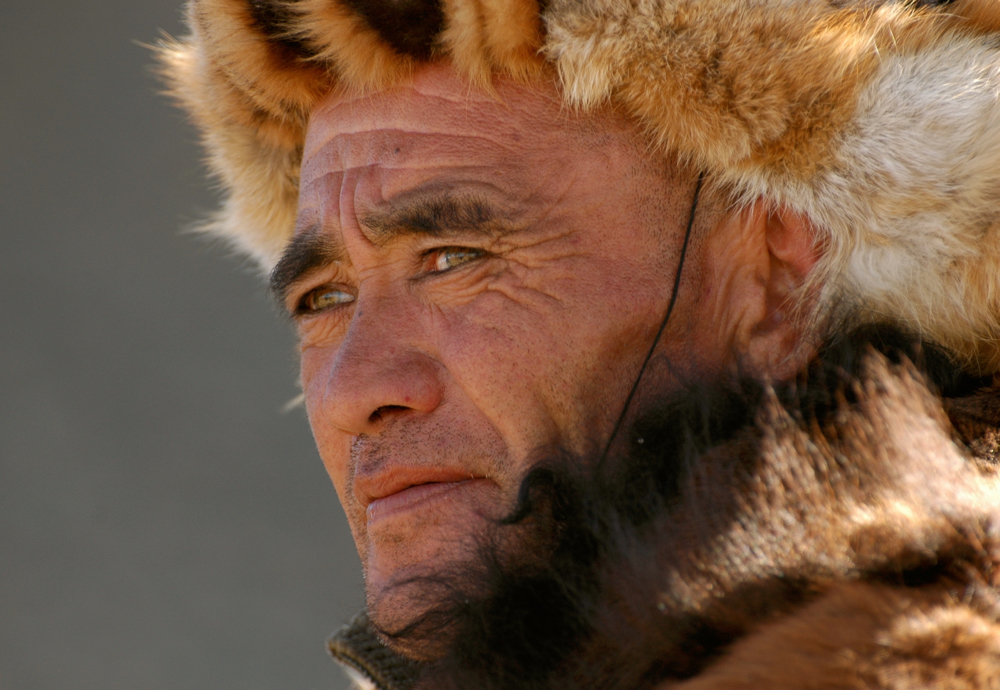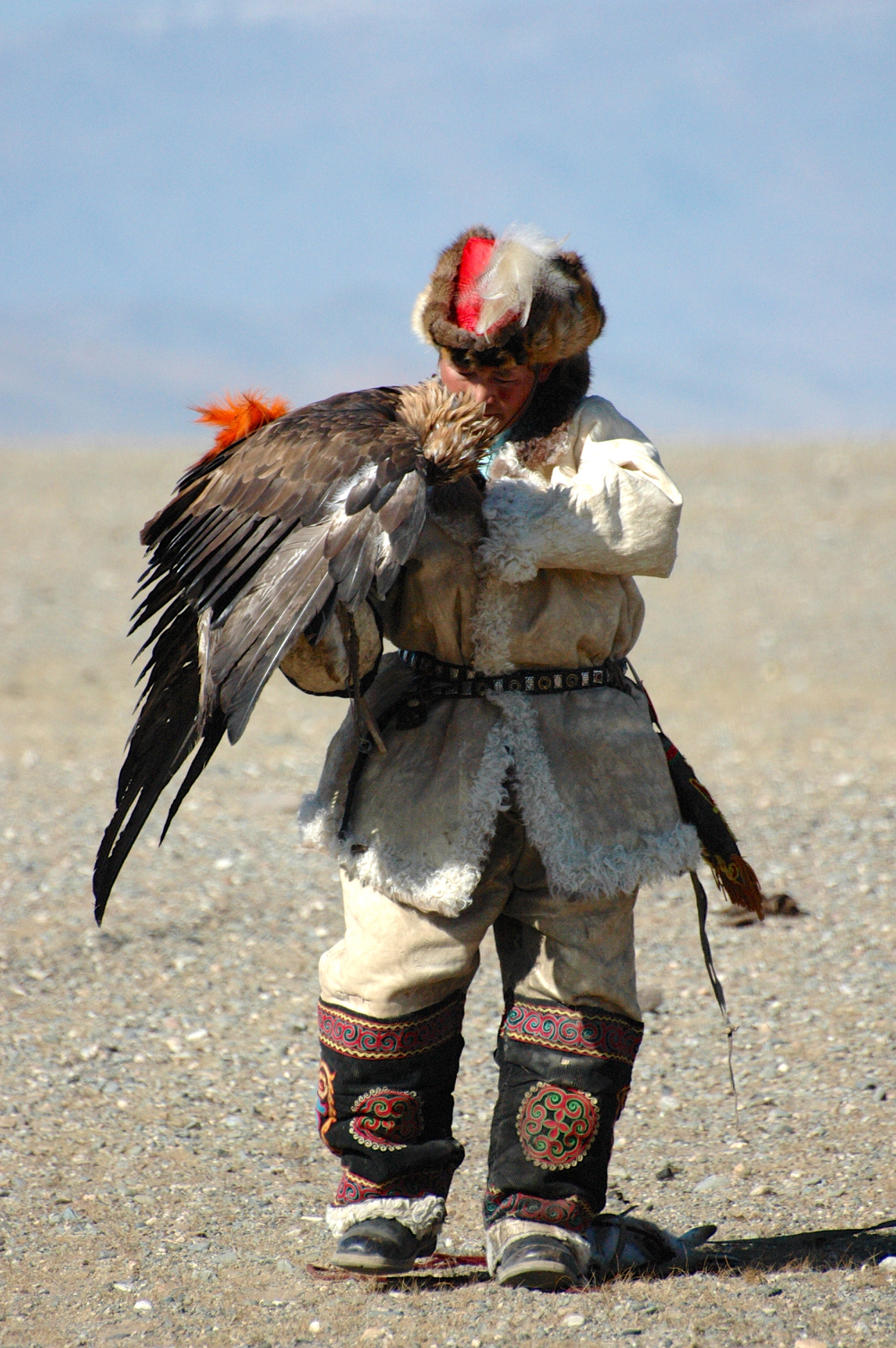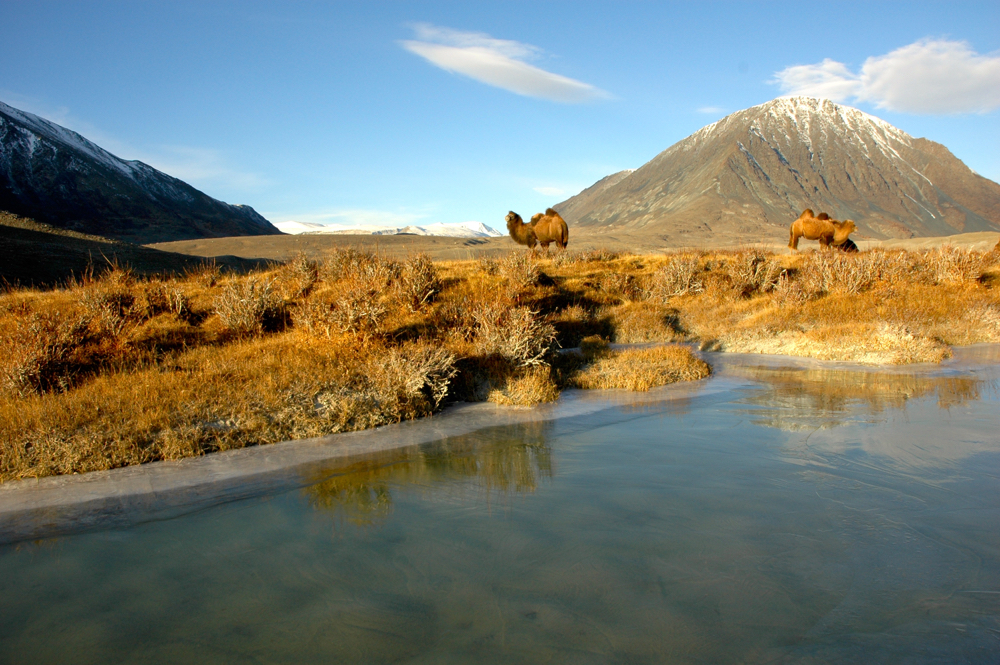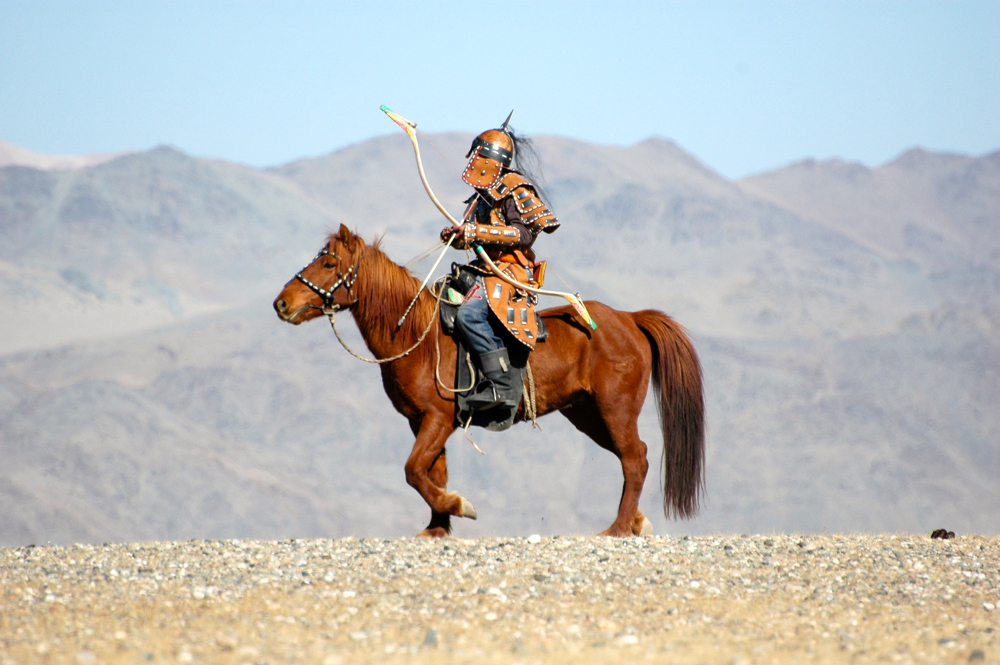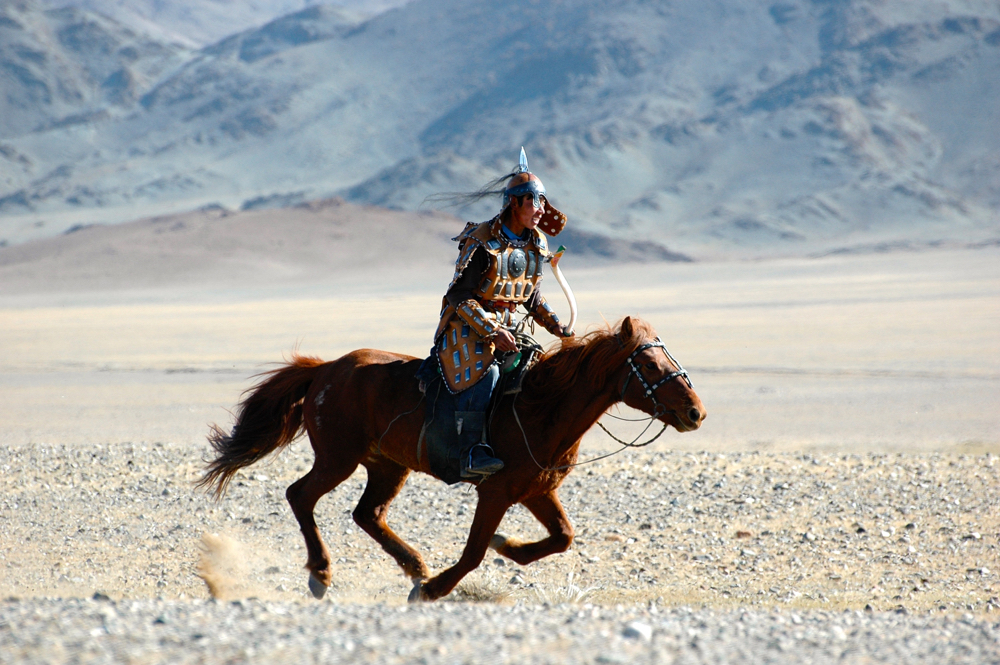Eagle eyes had latched onto me, reacting to my slightest move.
The mighty eagle perched on my left hand, supported by a wooden cast., while my right hand was holding the reigns of a Mongol Steppe horse, and that’s how we rode deep into the West of the Mongolian steppes, to Olgii in Altay.

The “we“ in question were Dshingis Khan and I. Dshingis Khan was the Mongolian guide, a nomad, and eagle hunter right out of the pages of a book. He spoke no English and I no Mongol. His name seemed very fitting, which he proved later on. After all, Dshingis Khan had managed to unite all Mongol people in the past, while the Dshingis Kahn I was riding with, managed to unite nearly all Nomad eagle hunters for the annual “Eagle Hunters of Mongolia“ event. Eagle Hunting Festival

On a clear autumn day …
I got off the plane in Ulan Bator, greatly looking forward to this journey as the fresh Mongolian wind welcomed me. It had taken a whole year of tiresome correspondence to find somebody who knew a participant at the nomad festival, who was also willing to take me there by horse. My liaison was Olganska, daughter of a family of teachers, and she organized everything, down to pick me up from the airport. Her English was good and my few belongings, as well as my cameras, were quickly stored in her rickety old Jeep. Then the doors slammed and we drove through the country’s capital city. Ulan Bator is a horrible town, shaped by old culture and the vision of individual politicians who crave for power. It presents a total uncontrolled planning and a messy infrastructure. Pollution on a great scale is highly visible, town planning chaotic to non-existent, and since Mongolia has little drinking water, its future holds massive challenges.
Our Jeep raced on since we wanted to reach the yurt or Ger The Yurt or Ger of the nomad with whom I was to ride to the festival. It was already dark when we stopped at a small village, and I was suddenly and wordlessly handed an eagle. I was full of awe at the sight of the magnificent animal on my lap, perched there right inside the Jeep next to my luggage. Olganska explained that this wonderful eagle would be my companion until we reached the eagle hunters in Olgii in about six days.

It was late in the evening by the time we reached the nomad’s Ger, and a flood of new and mostly unpleasant smells filled my nose. They would haunt me for weeks. The Ger was smoky because the central cooking place was filled with pots, full of of sheep meat, while wood and dried horse dung were constantly put into the oven to smoke the meat hung on its rim. Since water is rare in Mongolia, so is hygiene. If the oven is as cold as the clear, starry night outside, one just lies down on the carpets and furs on the floor in one’s clothes (including shoes).
Next morning, the horses were packed in no time. Dshingis Khan’s travel luggage for the next 20 days was the most minimalist I’ve ever seen. He carried nothing but his traditional Mongolian dress, a knife, a gun, and a piece of meat for his eagle. At each Ger, you find wooden poles for the Eagles to sleep on, and when they’re not hunting they always wear the little leather hoods on their head to cover their eyes. It’s only taken off during the hunt or at presentations, otherwise, the eagle would be constantly distracted and wildly flap its wings to take off for flight.
My left arm was supported by a piece of wood connected to the saddle, or the eagle’s weight would not have been bearable. A leather strap wrapped around its legs, and my hand literally keeps it on a short leash.

Dshingis Khan didn’t say a word during those hours of us crossing the steppe. He constantly checked the sky in every direction. When he saw something to hunt, he had to react quickly. He showed me how to remove the eagle’s little hood and foot straps in no time, and how to catapult it quickly into the air, with one forceful upwards move. With a few strong flaps of his wings, the eagle was soon out of sight. Dshingis Khan unerringly followed its course, while it took me 20 minutes until I also saw the eagle on the ground, where it perched majestically on its prey, and its talons firmly inside a rabbit’s body. The eagle only moves aside when we got off the horses, and Dshingis Khan immediately disemboweled the rabbit with his knife. The first piece of meat rightfully went to the eagle, the rest was cleaned and saved for the evening.

Six days passed quickly in this way, and although each day followed the same pattern, the excitement never waned. Nights inside the different Gers were all the more stuffy, though, unpleasant due to the alcohol, smoke and bodily odor. But as soon as we sat in the saddles the next morning and wordlessly rode through the sparse yet fascinating Mongolian landscape, all unpleasantness was forgotten. Day by day we got closer to the Ölgii, the venue of the eagle hunting festival.
Mid-October, somewhere south-west of Olgii, the scene of the eagle hunter festival. I’d often been at the back of beyond, but this time everything felt different. The scenery is one of its kind; the scraggy landscape pulls you under a spell of long past times and lets them become alive again. It wasn’t hard to imagine actually being in the times of Dshingis Khan when everything would have looked the just as it did today, and the nomads would have lived not much difference either. Eagle Hunting Festival.
For four days; the nomads display their eagles, let them hunt the traditional way, present their customs, drink like horses and compete in manly games. The way they handle their horses and camels is amazing, and even more so is what they can use these equestrian skills for. The horses’ dexterity is shown in riding competitions, but the absolute highlights are the contests in which the eagle hunters place their eagle at the top of a small hill, ride a distance of approximately 200 m and perform their “eagle call”. Each eagle hunter has their own individual call for his eagle. The hunter has previously killed prey which was tied with a rope to the saddle. The referees (select experienced eagle hunters) give a sign and measure the time it takes an eagle to catch the prey.
The scenery is being without equal and the barren landscape is capturing you totally, taking you back in time while it is rising again, right at this moment.
The final event showcases the fascinating archers, and as for myself … I’ve long felt like “little Dshingis Khan”.
Traditional clothing, crafts, horsemanship and the above-described hunting with eagles make this festival in Western Mongolia an unforgettable adventure. The following agents offer customized tours to Mongolia.
Mongolia, September – October 2008

